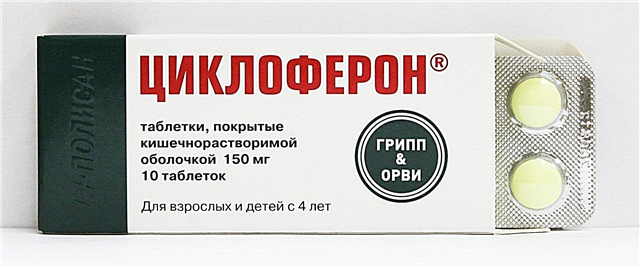Hypoxia in a child occurs during the intrauterine development of the fetus (perinatal period) or after the birth of the baby. In the second case, the disease is caused by postnatal causes. In the practice of obstetrics, intrauterine hypoxia is called antenatal, the postpartum state is called intrapartum.

The baby has a lack of oxygen in the womb
Hypoxia in newborns is a condition that occurs when there is insufficient oxygen supply (more than 4 weeks). The child's body requires a continuous supply of oxygen, air deficiency is accompanied by organ damage. Sometimes failures of internal systems end in irreversible consequences. The brain, heart, liver, kidneys of infants are most sensitive to hypoxia, the disease causes hemorrhages and edema of certain organs.
Risk of complications
Early hypoxia in a newborn has consequences for the child on the nervous, cardiovascular systems, brain, kidneys. In the second half of pregnancy, oxygen starvation becomes a common cause of deviations in the development of the child. The fetus suffers from low weight, neurological and mental disorders.
Important! Cerebral hypoxia in severe newborns increases the likelihood of intrauterine death of the baby, death on the first day of life.
Causes of cerebral hypoxia
The main causes of the disease are usually divided into five groups:
- Signs of hypoxia that appeared with anomalies of the placenta: abnormal development and attachment, presentation and detachment, trauma, tumors, infection.
- Umbilical cord pathologies: abnormal development, torso, true knot.
- Fetal diseases: hemolysis of erythrocytes, developmental delay inside the womb, infections, genetic pathologies.
- Difficult course of pregnancy and childbirth: gestosis, prolonged threat of abortion.
- Chronic diseases of pregnant women: cardiovascular, endocrine, renal, pulmonary. Alcohol, drug addiction.
Note. The main causes of neonatal hypoxia provoke uteroplacental insufficiency - the main factor in the development of chronic hypoxia.

Symptoms of cerebral hypoxia
Primary form
The main reason for the primary form of oxygen starvation is a violation of the synthesis of enzymes of the respiratory chain in vitamin deficiency B1, B2, PP. The condition is affected by the lack of communication between oxidative processes and phosphorylation, inactivation of respiratory enzymes by nitrites, cyanides, barbiturates, alcohol.
Brain hypoxia in newborns occurs against the background of damage to eukaryotic cells by toxins, radiation, free radical oxidation. In primary hypoxia, the oxidative transfer of the phosphoric acid residue from the phosphorylating donor agent to the substrate is impossible even with an increase in the oxygen tension in the mitochondria.
Complication of pregnancy
Often, a lack of oxygen causes atherosclerosis in the walls of blood vessels in the fetus and newborn, poses a danger to the mental, physical development of the baby, and forms problems of the central nervous system. Treatment of the disease requires normalization of blood flow to the uterus and placenta; in acute fetal hypoxia, doctors induce labor artificially, excluding the use of additional methods of treatment.
Intrauterine infections
The cause of intrauterine oxygen deficiency is often FPN (fetoplacental insufficiency) against the background of intrauterine infection. Infection in the blood damages the placental membranes, contributing to the deposition of immune complexes in the tissues, the disintegration of the functional system "mother - placenta - child", the manifestation of placental insufficiency. Infectious processes also cause fetal poisoning. Babies exposed to intrauterine infection differ from their peers in insufficient physical development, especially newborns with CMVI (cytomegalovirus infection).
Rhesus conflict
When carrying the first child, the mother's body does not produce antibodies to antigen D, the baby remains healthy. When a child is born, the blood of the woman in labor and the baby is often mixed, the mother's susceptibility to the Rh antigen increases, and the production of antibodies is inevitable.

Symptoms of Rh-conflict during pregnancy
The developed immune memory stimulates during the next pregnancy IgG immunoglobulins to antigen D. Antibodies penetrate the hematoplacental barrier into the baby's blood and bind to the Rh-positive erythrocytes of the baby. Erythrocytes weighed down with IgG immunoglobulins break down prematurely in the fetal spleen. A heterogeneous group of diseases appears, accompanied by hypoxia and acidosis.
Diabetes, chronic heart and lung diseases in mom
Among all endocrine pathologies, diabetes mellitus has the most adverse effect on pregnancy, causing complications, a negative effect on the development of the intrauterine fetus and the adaptive capacity of the infant. Perinatal mortality rates are the highest, early infectious morbidity is 3-4 times higher than the norms of the general population.
Diseases of the cardiovascular system (congenital or acquired heart disease, myocardial infarction, hypertension) provoke vascular spasms, impair the blood supply to the fetus. Bronchial asthma, pulmonary emphysema, chronic bronchitis, anemia (low hemoglobin) interfere with the delivery of oxygen to the tissues of the child's body.
Detachment of the placenta, preeclampsia, post-pregnancy
Detachment of the placenta provokes the rapid development of oxygen starvation, which endangers the life of the child.
Mom's bad habits
Rare short-term walks, unhealthy diet, abuse of unhealthy foods, stress are the main factors provoking oxygen starvation.
After a smoked cigarette, the muscle layer of the blood vessels shrinks, which negatively affects the mental development of the child, the reproductive system suffers, especially boys. The testicles in children suffering from hypoxia are smaller, children suffer from cryptorchidism and hypospadias.

Baby oxygen starvation
Children in the womb have no immunity, the toxic substances contained in cigarettes penetrate the placenta, soak the fetus. Smoking during pregnancy is also dangerous for the placenta, and the likelihood of miscarriage or intrauterine fetal death increases.
Important! Children born to mothers who smoke are more likely to suffer from respiratory tract pathologies and respiratory disorders.
Closing the airway with mucus in a child
If at birth signs of oxygen deprivation are found in a child, he receives medical attention. Mucus and liquid are disposed of from the respiratory tract, the baby is warmed up, resuscitated, eliminating the threat to life. As the condition stabilizes, the child is placed in a pressure chamber, and food is provided with special solutions. With age, the level of arousal, cramps, twitching of the arms and legs stop.
Secondary form
With secondary hypoxia, oxygen tension and the level of hemoglobin in the venous blood increase. Hypoxemia and cyanosis are absent, tissues lose the ability to utilize oxygen in the blood against the background of a decrease in the effectiveness of biological oxidation.
Circulatory disorders
The active development of fetal hypoxia can occur with impaired fetal-placental blood circulation caused by the threat of miscarriage, violation of the integrity of the umbilical cord, fetoplacental dysfunction, abnormality of labor.
Lung disorder or disease
Respiratory hypoxia is the result of complete or partial disruption of air movement in the lungs: with suffocation, drowning, bronchospasm, pulmonary edema, pneumonia.

Signs of oxygen starvation of organs
Insufficient straightening of lung tissue
Perinatal non-infectious lung disease caused by incomplete expansion of lung tissue requires long-term therapy with artificial ventilation and oxygen. There may be a need for special treatment in a hospital, then at home until the organ is completely healed. Usually, the lungs are restored in one year of life, less often the problem develops into asthma. Increased likelihood of bronchopulmonary pathologies, including pneumonia.
Consequences of hypoxia
Symptoms, consequences and treatment of hypoxia in newborns are determined according to the Apgar 10-point system, there are three levels of oxygen starvation:
- 8-10 points - the baby's condition is normal;
- 7-6 points - mild hypoxia;
- 5-4 points - the average form of the pathological condition;
- 3-0 points - the third level of hypoxia.
If the treatment of an infant suffering from hypoxia is not carried out in a timely manner, physical and mental developmental abnormalities are possible. Often the consequences of hypoxia are hypertonicity, delayed speech development, autism, cerebral palsy, less often death.
Signs of oxygen starvation in a newborn
Oxygen starvation in newborns can be manifested by the following symptoms:
- the release of meconium before birth or during childbirth (moderate to severe disease);
- weakened and irregular breathing, lack of screaming;
- cyanosis;
- lack of pulsation of the umbilical cord;
- weak reaction to stimuli (when checking the heel reflex, removing mucus from the respiratory tract).
The following phenomena indicate postpartum oxygen deficiency:
- trembling limbs, chin when crying;
- restless sleep;
- frequent crying, short sleep;
- restless feeding behavior;
- frequent regurgitation;
- nystagmus.
Symptoms do not always determine the lack of oxygen, a pediatrician examination and additional diagnostics are required.

Antenatal hypoxia
With a mild degree
Oxygen starvation of a mild form does not affect the development of the child, the symptoms pass quickly. Hypoxia does not require therapy.
With severe degree
Second degree hypoxia with quality care and treatment rarely disrupts the body. Treatment of a 1-3 month old baby is accompanied by sleep disturbances, anxiety, chin tremors. A severe form of hypoxia threatens with serious consequences for the baby: seizures, developmental delays, and brain problems are common.
Healing activities
Therapeutic procedures help to eliminate the cause of hypoxia, ensure an adequate supply of oxygen, and correct the homeostasis system.
Council. Sometimes hypoxia can be easily corrected by ventilating the room or walking in the fresh air.
If the lack of oxygen is caused by diseases of the lungs, heart, blood or poisoning, it becomes necessary to take more serious measures:
- The hypoxic (exogenous) state is corrected with oxygen equipment: apparatuses, bolons, pillows.
- Respiratory (respiratory) hypoxia is treated with bronchodilators, antihypoxants, and respiratory analeptics. Concentrated oxygen is used, artificial lung ventilation is performed. In chronic hypoxia, oxygen therapy is the main component.
- Hemic (blood) problem is solved by blood transfusion, stimulation of hematopoiesis, the baby is treated with oxygen.
- Circulatory diseases require corrective intervention on the heart and blood vessels. The use of drugs with a cardiotropic effect, anticoagulants to stabilize microcirculation, oxygen therapy is effective.
- Histoxic (tissue) hypoxia is corrected with antidotes for toxicity, mechanical ventilation, hyperbaric oxygenation.

Diagnosis of oxygen deficiency
Medical statistics show that oxygen starvation is observed in 10-15% of cases. If the expectant mother knows what hypoxia is in a child, how to timely detect and prevent the development of fetal pathology, the likelihood of preserving the health and life of the baby increases significantly.



